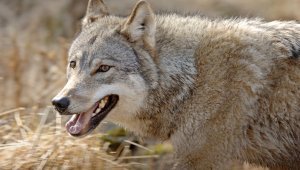Signs of a wolf
The wolf leaves tracks that are typical of large canines. Telling the tracks of a wolf apart from those left by a large dog is very difficult.
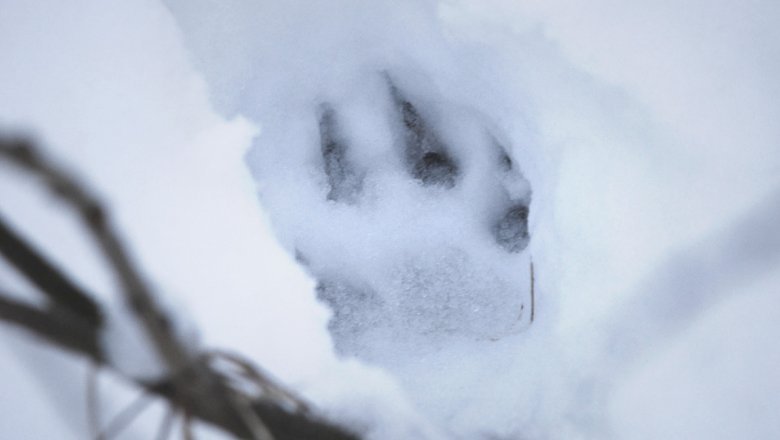 Wolf track on snow. Photo: Aku Ahlholm
Wolf track on snow. Photo: Aku Ahlholm
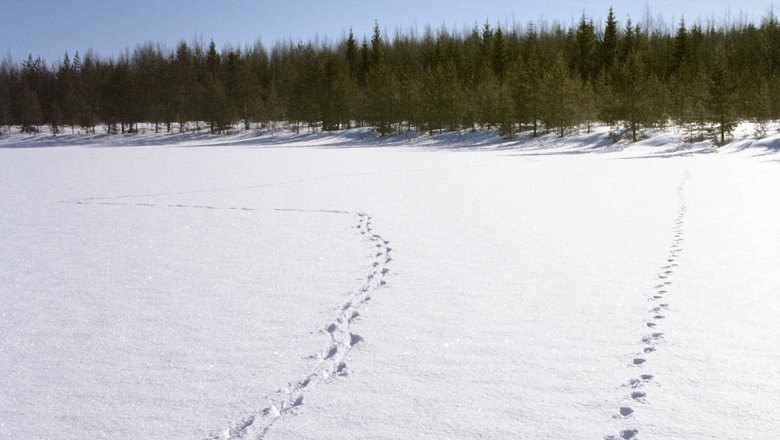 Wolf tracks on snow. Photo: Risto Sauso
Wolf tracks on snow. Photo: Risto Sauso
Wolf tracks
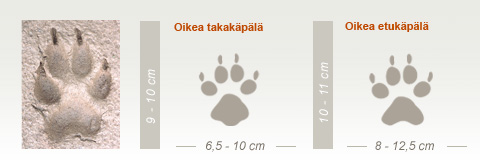
The wolf leaves tracks that are typical of large canines. Telling the tracks of a wolf apart from those left by a large dog is very difficult. As is typical of canines, the print left by the wolf's forepaw (10–11 cm) is larger than that left by its hindpaw (9–10 cm). When measuring wolf tracks, the claws are not included.
Four distinct impressions made by the animal's powerful claws are clearly visible in a wolf's paw print. The toes of the hindpaw are grouped closer together, which makes the hindpaw print appear more elongated than the forepaw print. One can also tell the prints of the forepaw and the hindpaw apart by the shape of the central pad. The pad of the forepaw is slightly concave whereas the pad of the hindpaw is either slightly convex or flat. The wolf's toes line up symmetrically whereas the lynx's middle toes leave asymmetrical impressions.
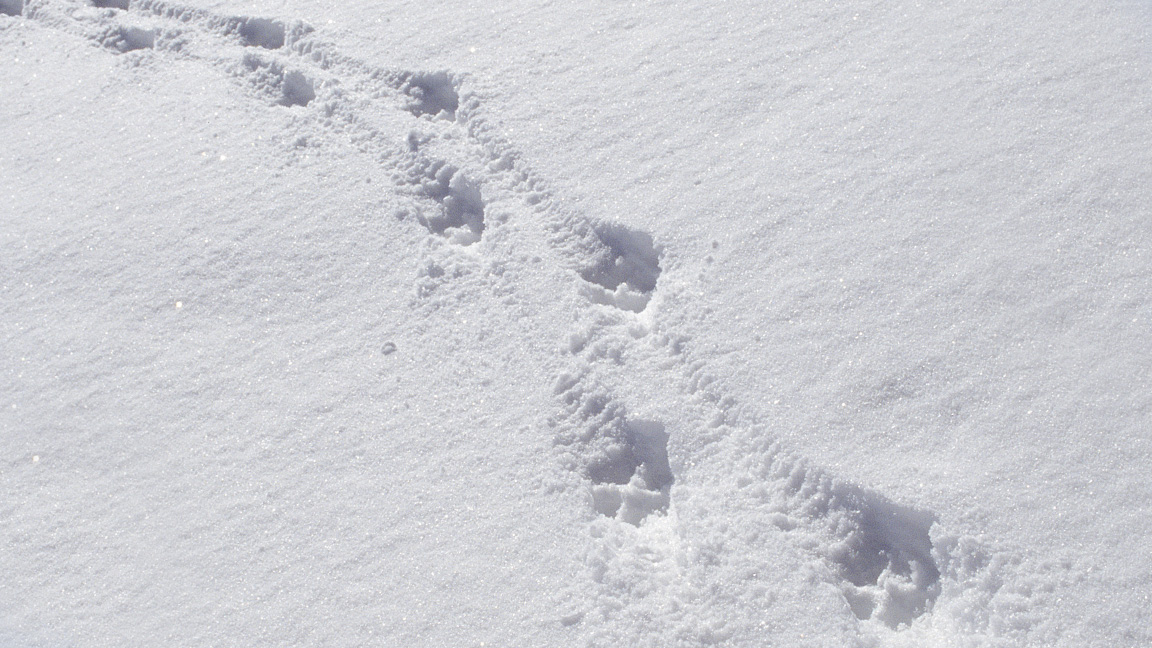
When moving across soft snow or a wet marsh the wolf will spread its toes as far apart as possible. When it does this, its tracks might get confused with those of a lynx. One might not be able to always see the impressions left by the wolf's claws on soft snow. If this is the case, attention should be paid to impressions left by the middle toes: with the wolf they will always be symmetrically in line. If fresh snow has covered the tracks, seeing the impressions becomes impossible. In these situations one should move along the track until there is a clear paw print under a tree or other such place where there hasn't been as much snow.
The wolf's preferred style of locomotion is the trot. On hard surfaces the wolf usually trots with its body slightly slanted towards the direction of movement. When the wolf moves like this, it can leave paired tracks with steps measuring up to two metres. On soft snow the steps are shorter (120–160 cm) and the wolf places the hindpaw in the same track as the forepaw. In the winter the most typical type of wolf track is a pearly line of trotting tracks. In deep and sinking snow the wolf may have to move by jumping. This is very exhausting so usually the wolf can't cross longer distances using this method.
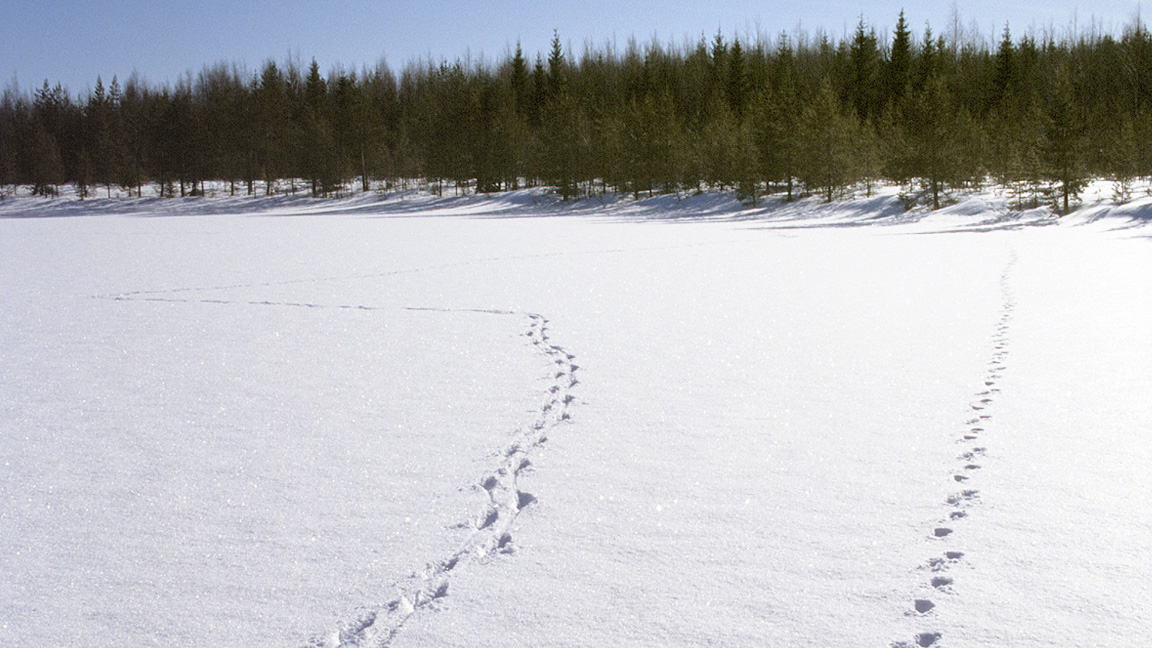
The wolf moves with purpose and determination, which means the tracks are in line with each other and the steps are narrow. The cubs are more playful in their movements and more curious in general. In late autumn as the first snows are falling, the cubs' paws have already reached their full size, which means telling them apart from the adults based on paw-size alone is no longer possible. Instead, jumping and other unruly frolicking in the snow usually give away the pups.
In soft snow the wolves in the pack share the same paths and use the same tracks. This packs the snow tighter and the holes become bigger. It is often hard to tell exactly how many wolves there are. You can only get a reliable count in places where the wolves have dispersed for some reason or by counting the impressions left by resting wolves.
Determining the direction a wolf or wolves have moved to can also be challenging in soft snow. Usually there will be some loose snow flown in the direction of movement at some point along the track. The track is also more clearly defined in the direction of movement, as the animal's leg will often leave a slanted impression on the other side of the track.
Other signs of a wolf
Every now and then wolves stop for a rest both during the day and the night. When there is no snow on the ground, finding wolf resting places is nearly impossible, unless you are incredibly lucky. In the winter time the resting spots are clearly visible in the snow. Wolves rest in places that are higher than the surrounding terrain and position themselves so that they can monitor their surroundings. The resting spot doesn't have to be a sheltered location and wolves might rest their legs even in the middle of a wide clearing.
Wolf den
A wolf den can be quite modest and you can hardly tell it apart from the surrounding terrain. In Finland wolves don't usually dig cave-like underground dens as they do in Southern Europe. Our wolf dens might be found under the roots of a fallen tree or in the bank of a forest ditch.
Wolf droppings
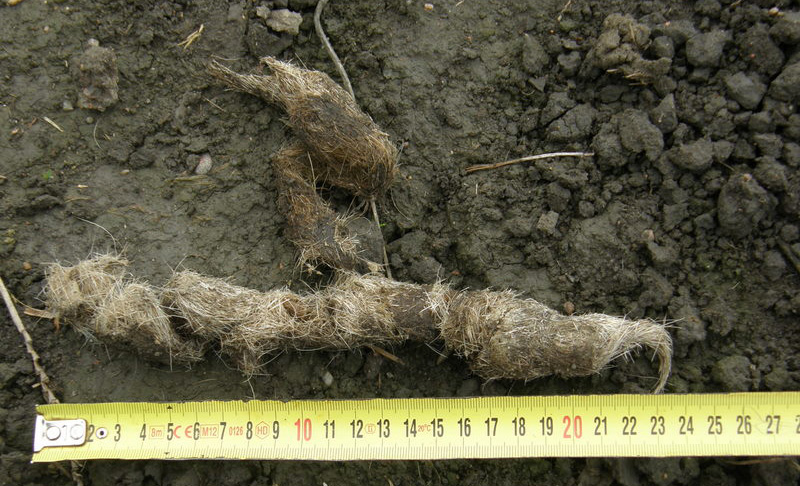
Wolf droppings are around 2.5–3 cm thick and bar-like with a strong, bad smell. They slightly resemble dog poop. Wolf droppings usually have hairs and bone fragments in them. The darker a wolf's droppings are, the more meat it has eaten. The pictured faeces contain a lot of prey animal hairs. When the droppings have this much hair and the colour is a brownish grey, there isn't much left of the prey animal anymore.
Urine signals
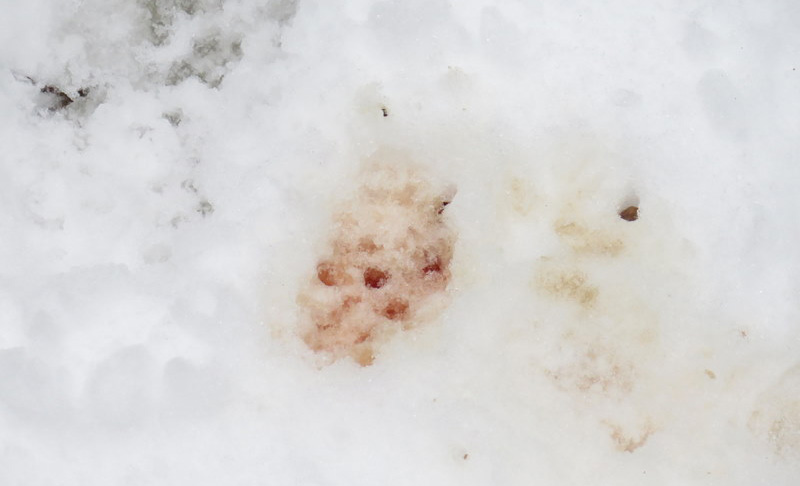
Wolves urinate like dogs: the male lifts its leg and the female doesn't. In the wolf pack the alpha couple, consisting of a male and a female, lift their legs when they pee and the rest of the pack do not. The wolf also uses urine signals to mark its territory. A wolf marking its territory lifts its leg and the chosen location is a visible one, such a rock or a tree trunk. If there is blood in a female wolf’s urine when she is marking her territory, she is coming into season. This means it is highly likely that a litter of wolf cubs will be born in the spring.
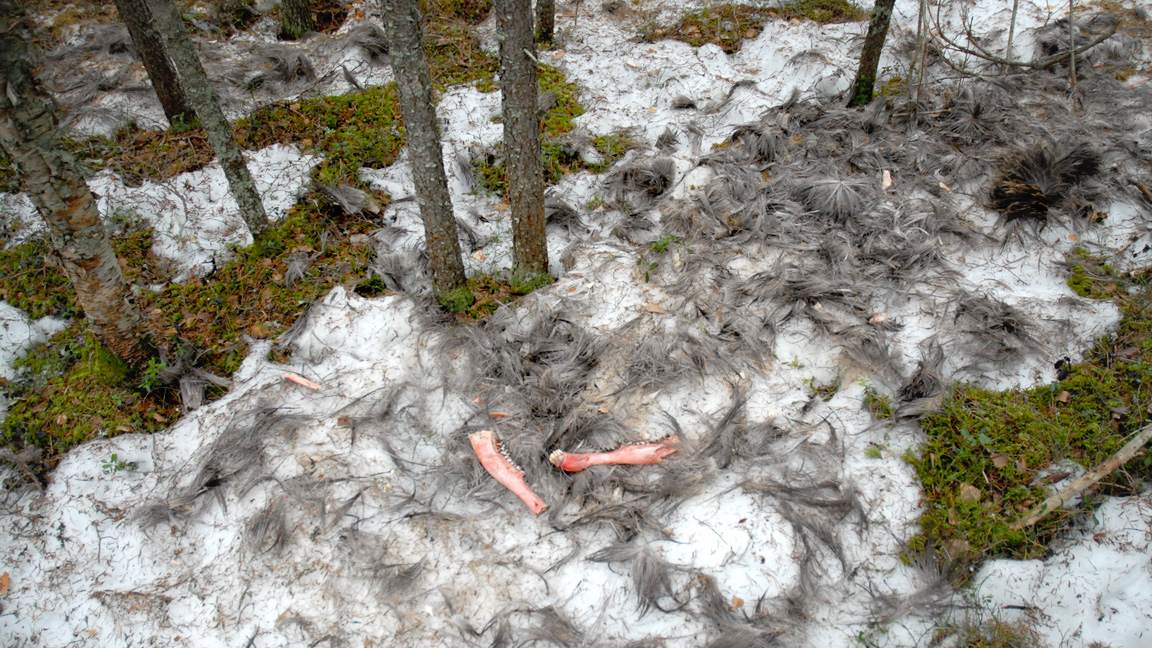
One can tell when a deer animal has been killed by a wolf when it has been powerfully bitten in the throat. When the throat is severed the warm blood will make its way through the snow and onto the ground. The wolf tears at the throat of a deer or reindeer a lot more severely than the lynx does. When attacking a moose, wolves usually also tear at its sides and hind legs. When wolves kill a deer they eat almost the entire carcass, and hairs, bones and the rumen can be found nearby. If you find a carcass, the predator that killed the animal can be identified by checking if large bones have been bitten through. The wolf has a powerful bite and it can severe and break large bones, which a bear will not do. This is not a fool-proof way of identifying the predator, of course, as a wolf may eat a carcass left behind by a bear.
